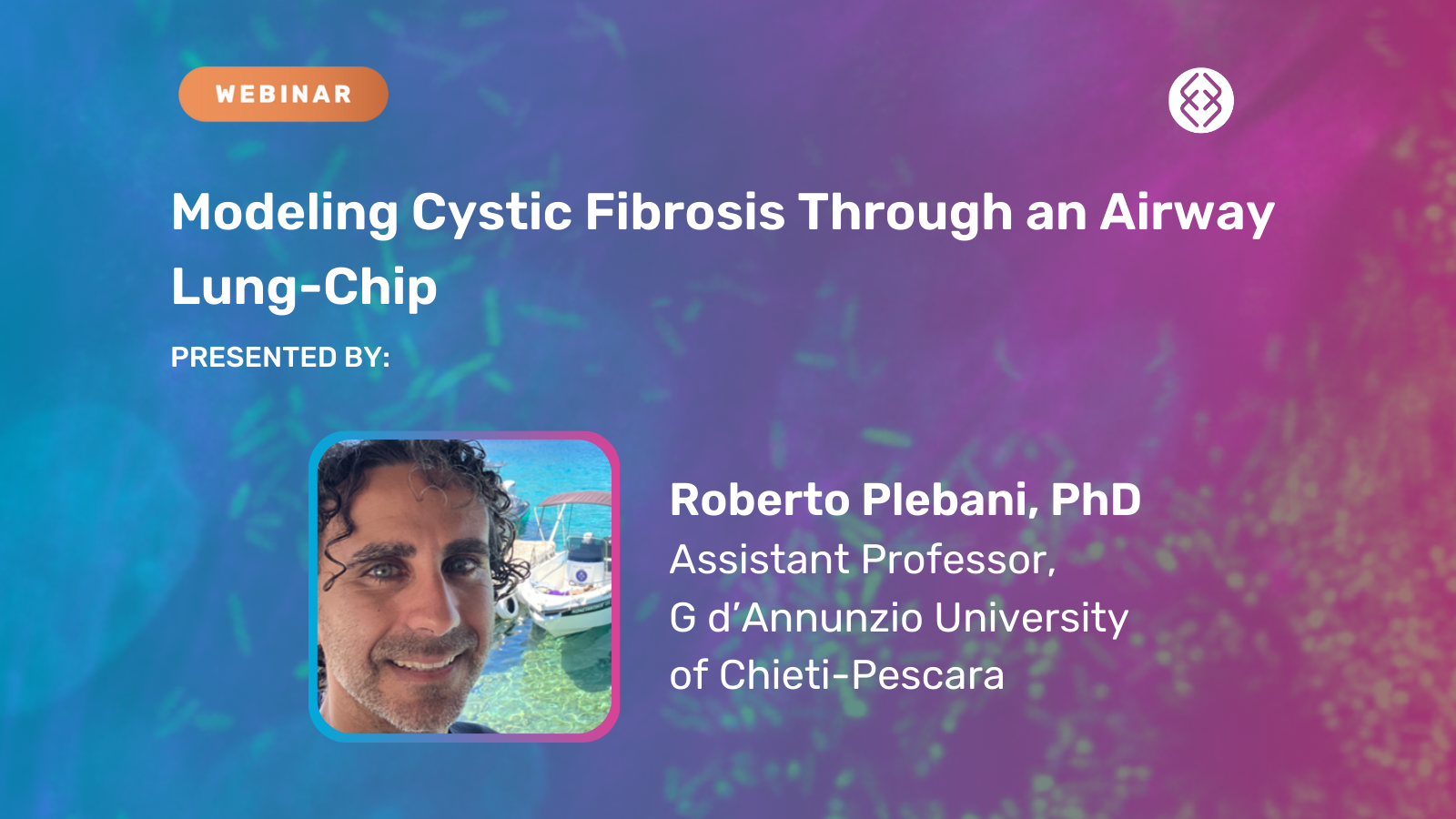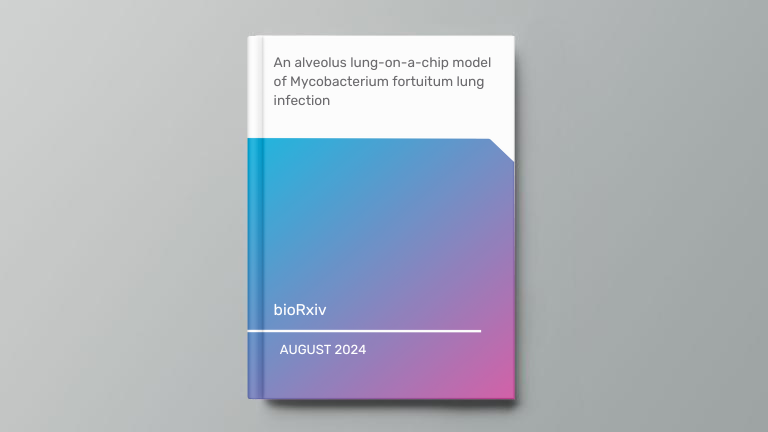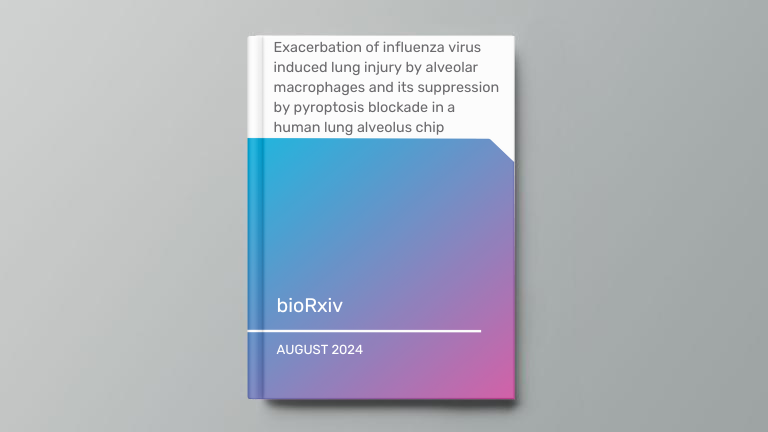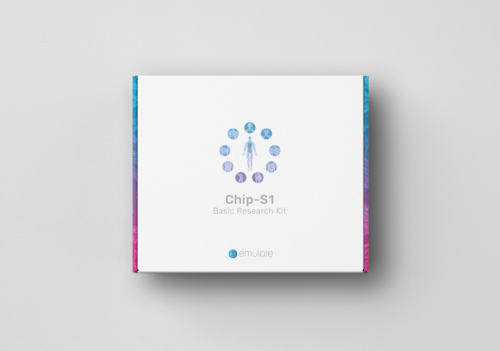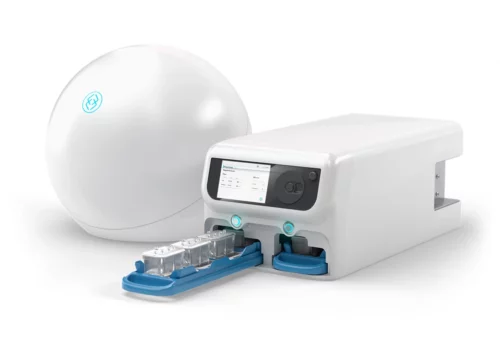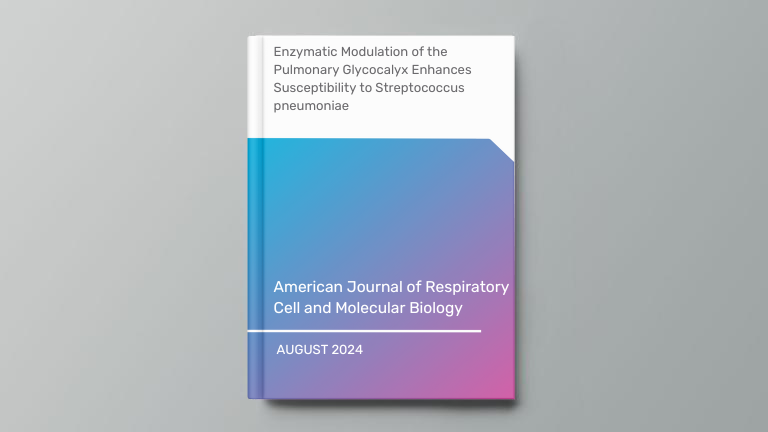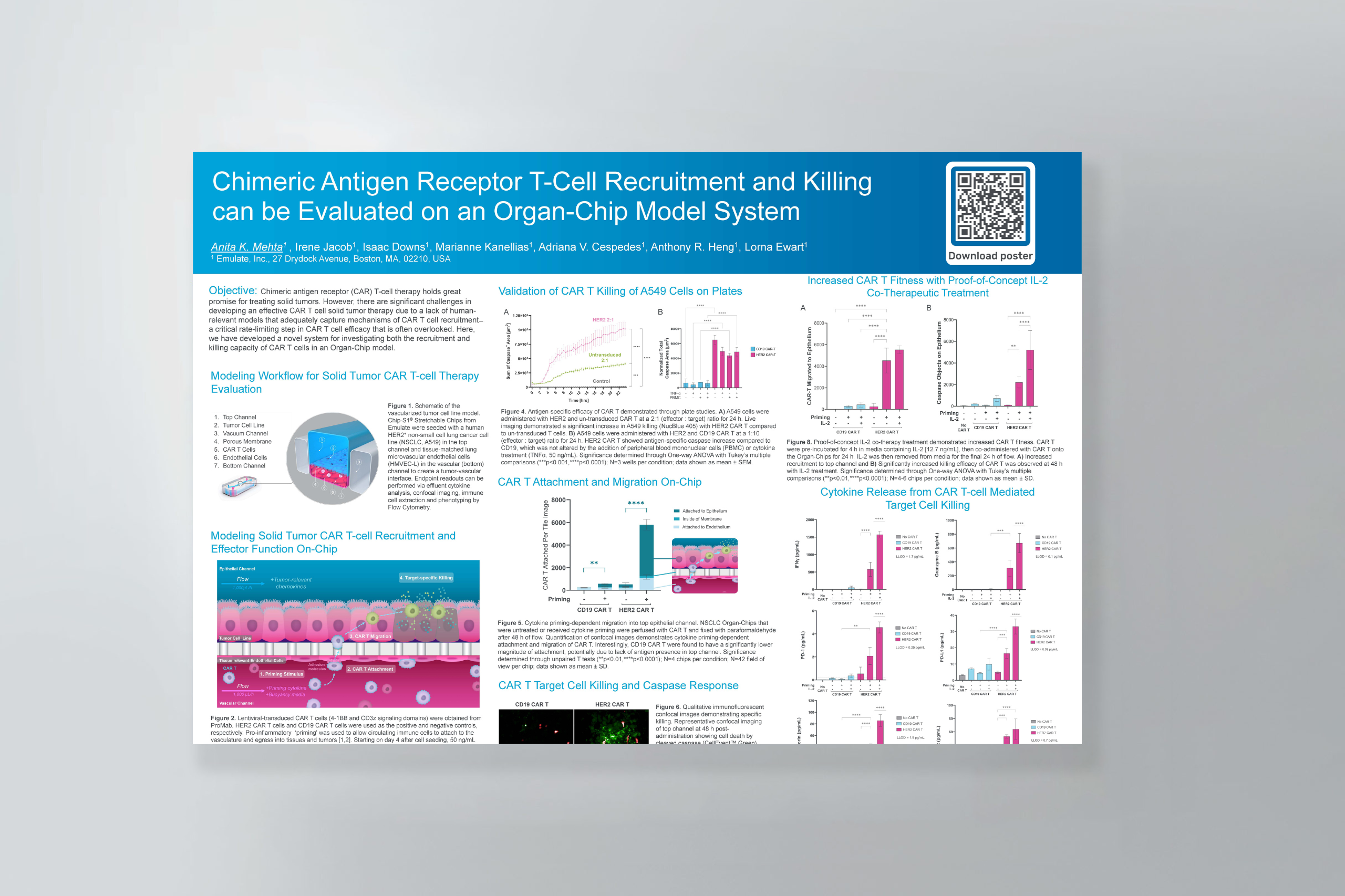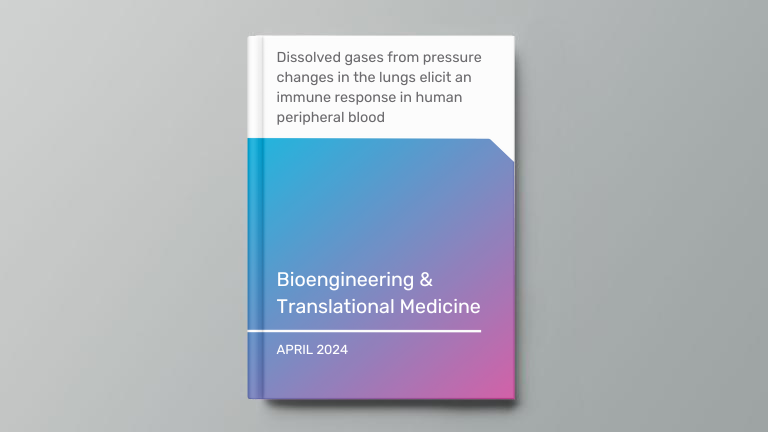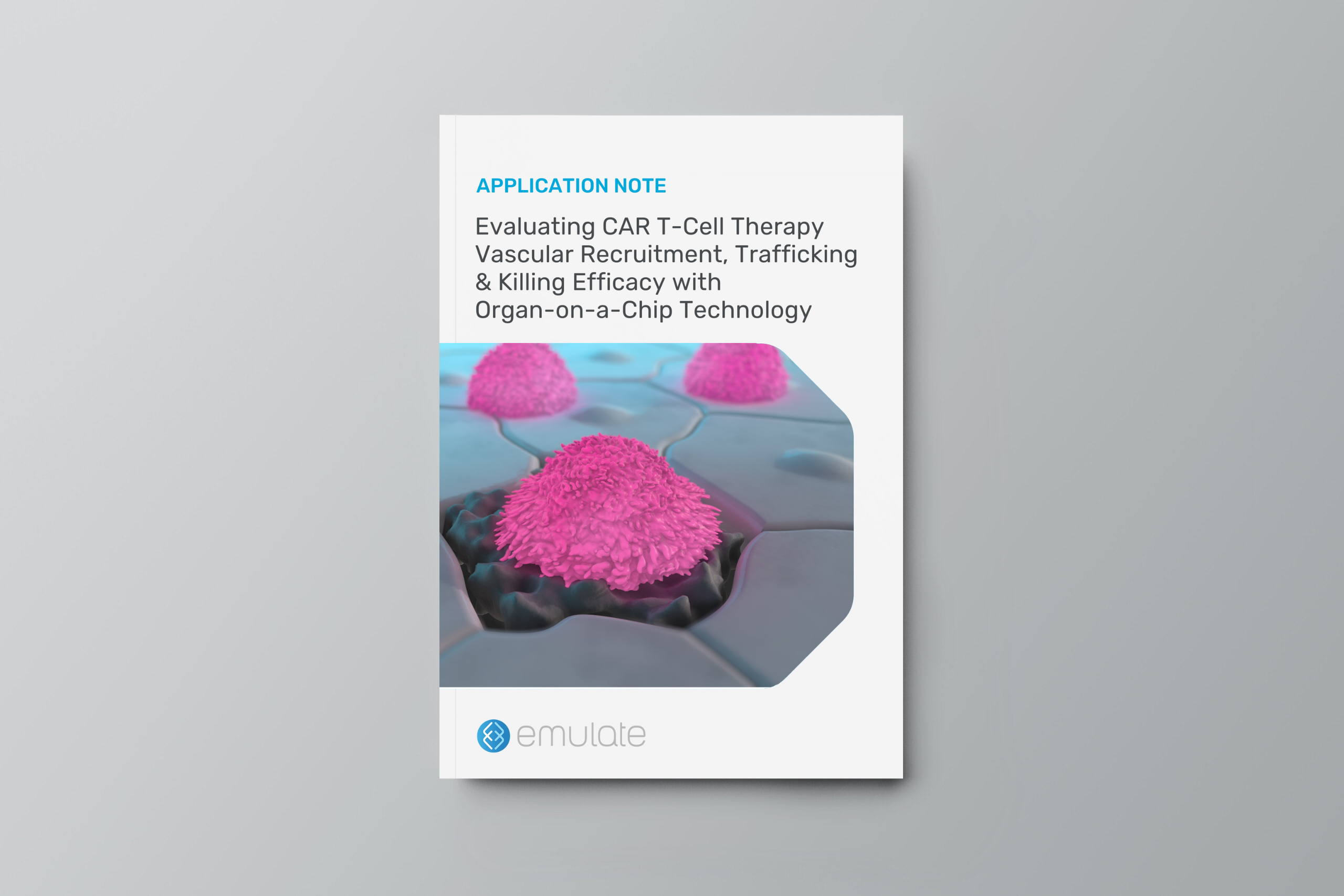In this session from Heidelberg MPS Day, Dr. Irina Shalashova presents her work on developing and applying an Alveolus Lung-Chip model to study idiopathic pulmonary fibrosis (IPF) and improve drug discovery efforts. She describes how her team isolates and cultures primary human alveolar epithelial cells, expanding them into organoids before seeding them on the chip’s epithelial compartment. Endothelial cells line the opposite channel, and mechanical stretching simulates breathing. Over time, the alveolar type II cells partially differentiate into type I-like cells, creating a physiologically relevant, dynamic environment. By treating these chips with fibrotic stimuli, the team can observe biomarker changes, gas exchange issues, and drug responses. Ultimately, this platform enables more accurate modeling of human lung pathology and holds promise for identifying novel therapeutics.
Organ Model: Respiratory System
Alveolus Lung-Chip for Studying Alveolar Niche and Lung Repair in Drug Discovery Research
Modeling Cystic Fibrosis Through an Airway Lung-Chip
Cystic fibrosis (CF) is a recessive genetic disease caused by mutations in the CFTR gene (Cystic fibrosis transmembrane conductance regulator), a protein with chloride channel function. Key consequences of a CFTR dysfunction include imbalance in ion transport, mucus accumulation, and chronic inflammation as well as infection in the airways of CF patients.
In this webinar, Roberto Plebani, PhD, described how he used the Chip-S1® Stretchable Chip to develop the first CF Airway Lung-Chip using primary cells derived from patients’ airways and lung microvascular endothelial cells. The chip not only allowed the reconstruction of a CF bronchial unit, with increased mucus production and inflammation, but also enabled the perfusion of immune cells and infection with pathogens to better model inflammation and infection in CF.
Key highlights from the webinar include:
- Development of the first CF Airway Lung-Chip and potential enhancements for its use as a preclinical CF model.
- How the chip replicates a CF bronchial unit with increased mucus, inflammation, immune cell perfusion, and pathogen infection to better model CF.
- Future studies that will use the chip for drug testing and aim to improve it by adding CF endothelium and stroma.
Heidelberg MPS Day
Heidelberg MPS Day, held on October 1st, 2024, was a one-day Organ-Chip User Group Meeting centered around the theme of “Disease-on-Chip: Insights from Cancer, Infectious Disease & Respiratory Models.”
At this event, Organ-Chip users and enthusiasts from across Europe came together to attend expert-led sessions, network, and discuss the latest advancements in the field.
Featured talks include:
“The Human Emulation System – Advancing Research in Cancer and Infectious Diseases” by Christine Lansche, PhD, Scientific Liaison, Emulate
“Alveolus Lung-Chip for Studying Alveolar Niche and Lung Repair” by Irina Shalashova, PhD, Postdoctoral Researcher, Boehringer Ingelheim
“Cord Formation and Alveolar Immunity – Harnessing Microphysiological Models to Study Humanity’s Oldest Foe” by Vivek Thacker, PhD, Group Leader, Heidelberg University Medical Faculty
“Cancer-Bone Crosstalk in an Organ-Chip Model of Breast Cancer Metastases” by Stefaan Verbruggen, PhD, Assistant Professor of Medical Technology, Queen Mary University of London
“Modelling Cancer-Microbe Interactions with Organoids and Organs-on-Chips” by Jens Puschhof, PhD, Principal Investigator, DKFZ
“Microbial Insights in Oncology” by Rafik Fellague-Chebra, MD, Msc, Executive Global Group Medical Director, Novartis
“Exacerbation of Influenza Virus Induced Lung Injury by Alveolar Macrophages and Its Suppresion by Pyroptosis Blockade in a Human Lung Alveolus Chip” by Yuncheng Man, PhD, Postdoctoral Research Fellow, Wyss Institute & Boston Children’s Hospital
An alveolus lung-on-a-chip model of Mycobacterium fortuitum lung infection
Organ Model: Lung (Alveolus)
Application: Infectious Disease
Abstract: Lung disease due to non-tuberculous mycobacteria (NTM) is rising in incidence. While both two dimensional cell culture and animal models exist for NTM infections, a major knowledge gap is the early responses of human alveolar and innate immune cells to NTM within the human alveolar microenvironment. Here we describe development of a humanized, three-dimensional, alveolus lung-on-a-chip (ALoC) model of Mycobacterium fortuitum lung infection that incorporates only primary human cells such as pulmonary vascular endothelial cells in a vascular channel, and type I and II alveolar cells and monocyte-derived macrophages in an alveolar channel along an air-liquid interface. M. fortuitum introduced into the alveolar channel primarily infected macrophages, with rare bacteria inside alveolar cells. Bulk-RNA sequencing of infected chips revealed marked upregulation of transcripts for cytokines, chemokines and secreted protease inhibitors (SERPINs). Our results demonstrate how a humanized ALoC system can identify critical early immune and epithelial responses to M. fortuitum infection. We envision potential application of the ALoC to other NTM and for studies of new antibiotics.
Exacerbation of influenza virus induced lung injury by alveolar macrophages and its suppression by pyroptosis blockade in a human lung alveolus chip
Organ Model: Lung (Alveolus)
Application: Infectious Disease
Abstract: Alveolar macrophages (AMs) are the major sentinel immune cells in human alveoli and play a central role in eliciting host inflammatory responses upon distal lung viral infection. Here, we incorporated peripheral human monocyte-derived macrophages within a microfluidic human Lung Alveolus Chip that recreates the human alveolar-capillary interface under an air-liquid interface along with vascular flow to study how residential AMs contribute to the human pulmonary response to viral infection. When Lung Alveolus Chips that were cultured with macrophages were infected with influenza H3N2, there was a major reduction in viral titers compared to chips without macrophages; however, there was significantly greater inflammation and tissue injury. Pro-inflammatory cytokine levels, recruitment of immune cells circulating through the vascular channel, and expression of genes involved in myelocyte activation were all increased, and this was accompanied by reduced epithelial and endothelial cell viability and compromise of the alveolar tissue barrier. These effects were partially mediated through activation of pyroptosis in macrophages and release of pro-inflammatory mediators, such as interleukin (IL)-1β, and blocking pyroptosis via caspase-1 inhibition suppressed lung inflammation and injury on-chip. These findings demonstrate how integrating tissue resident immune cells within human Lung Alveolus Chip can identify potential new therapeutic targets and uncover cell and molecular mechanisms that contribute to the development of viral pneumonia and acute respiratory distress syndrome (ARDS).

Products Used in This Publication
Enzymatic Modulation of the Pulmonary Glycocalyx Enhances Susceptibility to Streptococcus pneumoniae
Organ Model: Lung (Alveolus)
Application: Infectious Disease
How Organ-Chips Were Used: The Alveolus Lung-Chip was used to investigate the role of glycocalyx glycosaminoglycans in bacterial lung infections. The study found that enzymatic degradation of these components in the pulmonary glycocalyx increased the severity of pneumonia in mice, exacerbated lung damage, and compromised lung barrier integrity, leading to higher bacterial burden and inflammation. These findings were also supported by similar results in a human Lung-Chip model. Altogether, this enables a better understanding of disease mechanisms and potential therapeutic interventions in a human-relevant context, which may lead to more effective treatments.
Products Used In This Publication
CAR T-Cell Recruitment and Killing can be Evaluated on an Organ-Chip Model System
Abstract
Chimeric antigen receptor (CAR) T-cell therapy holds great promise for treating solid tumors. However, there are significant challenges in developing an effective CAR T cell solid tumor therapy due to a lack of human-relevant models that adequately capture mechanisms of CAR T cell recruitment—a critical rate-limiting step in CAR T cell efficacy that is often overlooked.
View this poster, presented at IMMUNOLOGY2024, to learn how Emulate researchers developed a novel system for investigating both the recruitment and killing capacity of CAR T cells in an Organ-Chip model.
Click here to watch Emulate Principal Scientist Anita Mehta’s full poster walkthrough from IMMUNOLOGY2024.
Dissolved gases from pressure changes in the lungs elicit an immune response in human peripheral blood
Organ Model: Lung (Alveolus)
Application: Immunology & Inflammation
Abstract: Conventional dogma suggests that decompression sickness (DCS) is caused by nitrogen bubble nucleation in the blood vessels and/or tissues; however, the abundance of bubbles does not correlate with DCS severity. Since immune cells respond to chemical and environmental cues, we hypothesized that the elevated partial pressures of dissolved gases drive aberrant immune cell phenotypes in the alveolar vasculature. To test this hypothesis, we measured immune responses within human lung-on-a-chip devices established with primary alveolar cells and microvascular cells. Devices were pressurized to 1.0 or 3.5 atm and surrounded by normal alveolar air or oxygen-reduced air. Phenotyping of neutrophils, monocytes, and dendritic cells as well as multiplexed ELISA revealed that immune responses occur within 1 h and that normal alveolar air (i.e., hyperbaric oxygen and nitrogen) confer greater immune activation. This work strongly suggests innate immune cell reactions initiated at elevated partial pressures contribute to the etiology of DCS.
Evaluating CAR T-Cell Therapy Vascular Recruitment, Trafficking & Killing Efficacy with Organ-on-a-Chip Technology
Chimeric antigen receptor (CAR) T-cell therapy shows significant potential in treating various human cancers. Unfortunately, researchers have faced difficulty in adapting this therapy to target solid tumors, where CAR T cells face unique challenges, such as antigen heterogeneity, an immuno-suppressive microenvironment, and T-cell exhaustion.
However, none of these challenges matter unless the CAR T cells can extravasate out of the blood stream and successfully migrate to the site of the tumor—an often-overlooked yet critical rate-limiting part of the process that cannot be modeled in conventional cell cultures.
This application note explains how Organ-Chips can be used to model the entire journey of solid tumor CAR T-cell therapy in a vascularized cancer cell line model.
In this application note, you will learn how Organ-Chips can be used to:
- Evaluate CAR T-cell vascular recruitment and killing efficacy in a single, unified assay.
- Assess antigen-specific killing and degranulation through a range of imaging and effluent-based analysis.
- Investigate co-therapeutic efficacy, as shown by proof-of-concept IL-2 data.
- Adapt the workflow to study a diverse range of solid tumor cell lines, immunotherapies, and co-therapeutics.
Drug Discovery Day 2024: Gaining Human-Relevant Insights into Infectious Disease
In this session, our expert speakers highlight how they have used Organ-Chips to study viral and bacterial infection, including SARS-CoV-2, Nipah virus, and Mycobacterium tuberculosis. Watch to learn how you can gain deeper insights into infectious disease pathogenesis, infection-induced inflammatory response, and more.
Talk 1: Human Lung Microfluidic Chip: Nipah Virus Disease Modeling and Antiviral Treatments in Maximum Containment

Sushma Bhosle, PhD
Molecular Virology Associate Study Director
NIH/NIAID
Dr. Bhosle’s research group at the National Institute of Allergy and Infectious Diseases (NIAID) leveraged human Small Airway Lung-Chips to model Nipah (NiV) virus disease modelling in maximum containment. They demonstrated the application of NiV-infected Small Airway Lung-Chips towards therapeutic evaluation of antiviral drugs. Further, successful recapitulation of neutrophil infiltration, critical immune responses, activation of endothelium leading to inflammation was achieved with human Lung-Chips.
Talk 2: Early events in tuberculosis—harnessing microphysiological models to study humanity’s oldest foe

Vivek Thacker, PhD
Group Leader
University of Heidelberg Medical Facility
Tissue microenvironments profoundly influence infection and treatment outcomes; but their roles can be difficult to dissect in a mechanistic manner. This is particularly so for tuberculosis, whose early stages of infection in alveoli are difficult to study in any animal model and not recapitulated in typical in vitro models of infection. In this talk, Dr. Thacker will describe how microphysiological models such as Organ-Chips are powerful tools to fill this gap and provide new insights into how obligate pathogens, such as Mycobacterium tuberculosis, adapt to specific tissue niches and what consequences this may have for treatment outcomes.
For this research, Dr. Thacker and team received the 2024 SwissTB Award.
Talk 3: Application of Airway-on-Chip Models to study Bacterial Lung Infection

Amy Ryan, PhD
Associate Professor of Anatomy and Cell Biology
University of Iowa
Many lung diseases, both acute and chronic, are associated with bacterial infection damaging the integrity of the epithelial barrier. Dr. Ryan’s recent collaborative research has developed Airway-on-chip models, which offer a microscale platform that mimics many features of human lung physiology. This platform facilitates the investigation of bacterial lung infections by replicating key features of the airway environment, including directional air flow and stretch. These models enable real-time monitoring of bacterial behavior and host responses, advancing our understanding of infection dynamics and the development of targeted therapeutic strategies.


